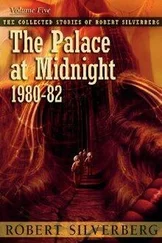Kermit Heartsong - Ukraine - ZBIG's Grand Chess Board & How The West Was Checkmated
Здесь есть возможность читать онлайн «Kermit Heartsong - Ukraine - ZBIG's Grand Chess Board & How The West Was Checkmated» весь текст электронной книги совершенно бесплатно (целиком полную версию без сокращений). В некоторых случаях можно слушать аудио, скачать через торрент в формате fb2 и присутствует краткое содержание. Год выпуска: 2015, Жанр: Политика, на английском языке. Описание произведения, (предисловие) а так же отзывы посетителей доступны на портале библиотеки ЛибКат.
- Название:Ukraine: ZBIG's Grand Chess Board & How The West Was Checkmated
- Автор:
- Жанр:
- Год:2015
- ISBN:нет данных
- Рейтинг книги:4 / 5. Голосов: 1
-
Избранное:Добавить в избранное
- Отзывы:
-
Ваша оценка:
- 80
- 1
- 2
- 3
- 4
- 5
Ukraine: ZBIG's Grand Chess Board & How The West Was Checkmated: краткое содержание, описание и аннотация
Предлагаем к чтению аннотацию, описание, краткое содержание или предисловие (зависит от того, что написал сам автор книги «Ukraine: ZBIG's Grand Chess Board & How The West Was Checkmated»). Если вы не нашли необходимую информацию о книге — напишите в комментариях, мы постараемся отыскать её.
Ukraine: ZBIG's Grand Chess Board & How The West Was Checkmated — читать онлайн бесплатно полную книгу (весь текст) целиком
Ниже представлен текст книги, разбитый по страницам. Система сохранения места последней прочитанной страницы, позволяет с удобством читать онлайн бесплатно книгу «Ukraine: ZBIG's Grand Chess Board & How The West Was Checkmated», без необходимости каждый раз заново искать на чём Вы остановились. Поставьте закладку, и сможете в любой момент перейти на страницу, на которой закончили чтение.
Интервал:
Закладка:
And voila , color revolution, though the disclaimer should probably read: “Results may vary, but know that the hope and change, the freedom and democracy envisioned was little more than a cynical, prefabricated pipe dream.” In reality, the color revolution regime change endgame, as imposed by its interlocutor, the IMF, will inevitably take the form of a structural adjustment program that will—
•Dramatically cut social services and funds for education
•Limit and or reduce wages and pensions
•Impose layoffs in the public sector
•Call for investment guarantees for foreign private corporations
•Open the door for large-scale privatization of state assets
•Necessitate devaluing the currency
•Transform residents of said country to (low) wage slaves, the disenfranchised, or something far worse
The financial “pound of flesh” for such a color revolution will invariably lead to a significant reduction of the country’s GDP, the plundering of its various national assets — precious metals (think gold reserves), minerals, gas, oil, land (to Western oligarchs and multinationals), and adherence to the West’s geopolitical script. Said adherence will require the proper voting (or abstention) record in international forums, compelled “Coalition of the Willing” duty, and the necessary Central Bank and free market reforms.
Perhaps it is true that memories are short, as Ukraine’s initial experience with the IMF’s structural adjustment program came in 1992, lasted until 1995, and led to the reduction of Ukraine’s GDP by 60 percent.
Ukraine I — The Orange Revolution
The Ukraine’s Orange Revolution of 2004 would be a textbook example of the various color revolutions that preceded it and those yet to come.
In November 2004 presidential candidate Victor Yanukovych won the run-off election against Viktor Yushchenko, a former governor of Ukraine’s Central Bank. However, following Yanukovych’s victory, numerous unsubstantiated claims of fraud arose from the Yushchenko camp and his supporters.
While Yanukovych, like Yushchenko, favored increased ties with the West, Yanukovych was not an enthusiastic supporter of Ukraine joining NATO, as his primary constituency was the pro-Russian Eastern Ukraine. This became an issue for the West. Yuschenko, on the other hand, had Central Bank credentials and hard-wired affiliations with the West. His wife was a former official in the Reagan and George H.W. Bush Administrations and Yuschenko favored NATO and EU membership. Yuschenko was thus the color revolution’s darling (see Yatsenyuk).
Ukraine’s first Orange Revolution began immediately after the run-off, with its call of tainted elections and its target, the pre-emptive regime change of Yanukovych. The media fell into lockstep with the “Orangists” and became a willing accomplice and a staunch detractor of Yanukovych.
Mass street protest, civil disobedience, sit-ins and general strikes, as per the color revolution manual, were immediately and systematically rolled out.
Within weeks, Ukraine’s Orange Revolution had precipitated the Ukrainian Supreme Court’s annulment of the November run-off results and ordering of a new election for December 26, 2004. Yushchenko won the election and was inaugurated on January 23, 2005.
However, despite winning the color revolution/Regime Change battle, the Western soft-war in Ukraine would inevitably be lost. As detailed in the article, “The Orange Revolution Peeled” (Raimondo 2010):
[Yushchenko’s] Regime turned out to be just as incompetent and rife with cronyism as his corrupt and venal predecessors, if not more so. A great deal of Western “aid” money disappeared down several rabbit holes. Worse, the economy was paralyzed by the imposition of price controls, and corrupted by brazen influence-peddling. Under Yushchenko’s power-sharing agreement with the volatile Yulia Tymoshenko, the “gas princess” and Amazonian oligarch, the country disintegrated, not only economically but socially as centrifugal forces of culture, language, and the weight of history were brought to bear on the unity of the country, and things began to come apart. (Raimondo 2010)
Embezzlement, infighting, systemic corruption, and betrayal between the new regime’s leaders, Prime Minister Yulia Tymoshenko and President Yuschenko, derailed the goals of the West. Yanukovych was then elected in 2010 and began to ameliorate relations with Russia, while actively courting the West as well. And while corruption was also part and parcel of Yanukovych’s term, geopolitical pragmatism and realpolitik would win in the short term.
However, refusing to be thwarted, Washington would, over the course of the next decade, “invest” $5 billion in Ukraine to finally have its way. The invested monies would be spent to train subversive groups (Svoboda, Right Sektor, Fatherland Party) and to prepare and educate select sectors of the country in order to launch a redux of the first Orange Revolution. The tactics would remain the same: foment agitation for EU membership; purge from Ukrainian’s Rada (parliament) highly “questionable” political groups (Communist Party, Party of Regions); implement draconian financial measures via the IMF and the World Bank; and plunder, privatize and strip mine a range of Ukrainian assets (gold, oil, gas, industry, etc.).
With the actors trained and the stage set, it would now be time for a dress rehearsal to iron out the kinks, so to speak, for Orange Revolution II.
Georgia, The Dress Rehearsal
Georgia’s color revolution was color-coded as rose and had taken place in 2003, but the West had unfinished business in that former Soviet state. It had “regime changed” Georgian President and former Soviet Foreign Minister, Eduard Shevardnadze, and ushered in Mikheil Saakashvili as president.
Saakashvili, American-educated and staunchly pro-West, immediately sought to have Georgia join both the European Union and NATO (Shakarian 2014).
Over the course of the next several years, Saakashvili continually engaged in provocative, anti-Russian rhetoric, which led to a steadily deteriorating relationship between Russia and Georgia.
During this period, the Pentagon, NATO, and allied militaries concentrated their efforts and actions on attempting to mold the Georgian military into a capable fighting force and thus another belligerent pawn at Russia’s front line. As reported in the Financial Times , in the months before the Georgian attack, the Pentagon had provided combat training to Georgian special-forces commandos (Chomsky 2008).
On August 7, 2008, during the Olympic Games in Beijing, China, President Saakashvili authorized the Georgian military to attack the city of Tskhinvali in the breakaway region of South Ossetia. The Georgian military fired an artillery bombardment upon Russian peacekeepers and civilians, in the disputed South Ossetia territory. As reported by Mikhail Barabanov (2008) in his article, “Three military Analyses of the 4 Day War Between Russia and Georgia”:
The attack on South Ossetia was not spontaneous. Over the course of several days in early August, the Georgians appear to have secretly concentrated a significant number of troops and equipment in the Georgian enclaves in the South Ossetian conflict zone, under cover of providing support for the exchange of fire with Ossetian formations. On August 7, at about 22:00, the Georgians began a massive artillery bombardment of Tskhinvali, the capital of South Ossetia, and by dawn the next day began an attack aimed at capturing Tskhinvali and the rest of the territory of South Ossetia. By 08:00 on August 8, Georgian infantry and tanks had entered Tskhinvali and engaged in a fierce battle with Ossetian forces and the Russian peacekeeping battalion stationed in the city. (Barabanov 2008)
Читать дальшеИнтервал:
Закладка:
Похожие книги на «Ukraine: ZBIG's Grand Chess Board & How The West Was Checkmated»
Представляем Вашему вниманию похожие книги на «Ukraine: ZBIG's Grand Chess Board & How The West Was Checkmated» списком для выбора. Мы отобрали схожую по названию и смыслу литературу в надежде предоставить читателям больше вариантов отыскать новые, интересные, ещё непрочитанные произведения.
Обсуждение, отзывы о книге «Ukraine: ZBIG's Grand Chess Board & How The West Was Checkmated» и просто собственные мнения читателей. Оставьте ваши комментарии, напишите, что Вы думаете о произведении, его смысле или главных героях. Укажите что конкретно понравилось, а что нет, и почему Вы так считаете.











